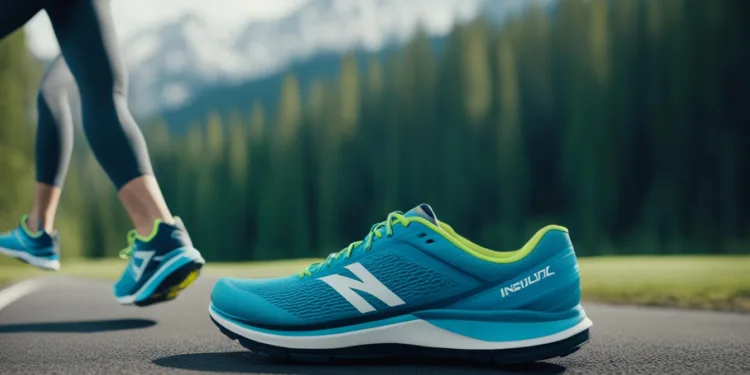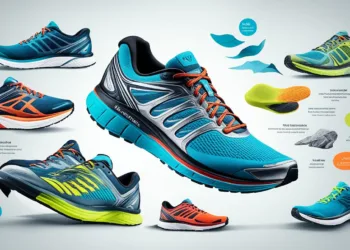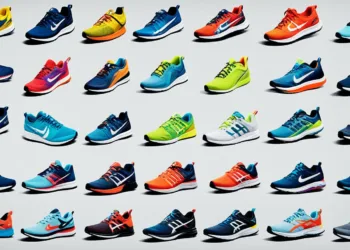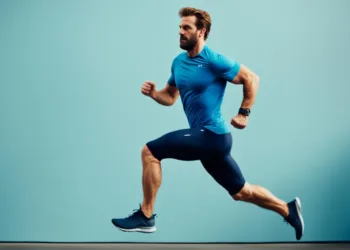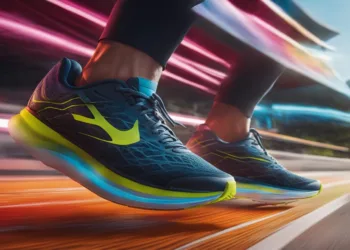Table of Contents
Whether you’re an avid marathon runner or a casual jogging enthusiast, you want your running shoes to provide optimal comfort and support. The key to maintaining this quality lies in the heart of your boots – the insoles. Replacing the original insoles is essential to avoid discomfort and potential injuries as they start to wear down. That’s where the concept of running shoe insole replacement comes in.
Quality replacement insoles can return the crucial cushioning and shock absorption with each stride. This intelligent and cost-effective move of Enhancing Running Shoes with New Insoles ensures that you’re not compromising on comfort and that your feet are getting the perfect level of support they need to keep you running at your best. So, let’s delve deeper into How to Replace Running Shoe Insoles to make sure your feet, in essence, hit the ground running!
Key Takeaways:
- Importance of Insoles for Running Comfort
- Signs for Running Shoes Insoles Replacement
- Analyzing Running Shoe Wear Patterns
- Choosing the Best Insoles for Running Shoes
- Steps for Replacing Running Shoe Insoles
Understanding the Importance of Insoles for Running Comfort
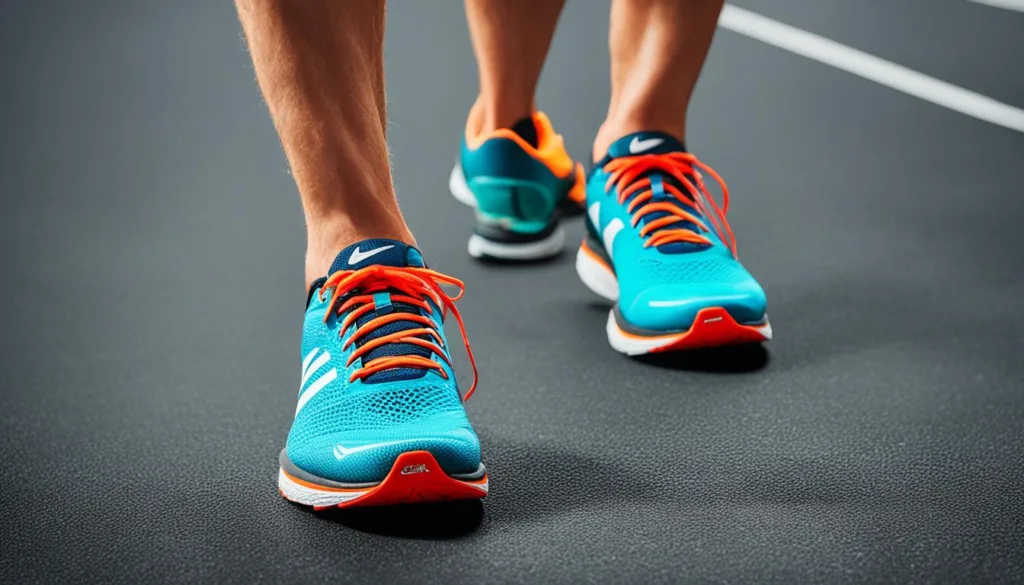
When it comes to running, comfort is vital. The best insoles for running shoes significantly contribute to ensuring a comfortable running experience. Upgrading insoles can often make all the difference in running shoe comfort. Let’s unravel the impact of quality insoles on your running performance, standard foot issues they can help address, and how they aid with cushioning and shock absorption.
How Insoles Affect Running Performance
Insoles offer an effective way to enhance the fit and comfort of your running shoes. They act as a foundation supporting your foot’s natural structure, improving comfort and performance. Quality insoles distribute weight evenly, reduce impact, and align the foot during the running cycle. These essentially aid in boosting your running performance.
Common Foot Issues Addressed by Quality Insoles
Running shoe insole options, especially the quality ones, can significantly help in preventing and managing several foot-related issues. Conditions like shin splints, plantar fasciitis, and general foot fatigue can often be mitigated with the right insoles. These conditions, in most cases, are due to lack of adequate support and cushioning, which quality insoles guarantee.
Impact of Cushioning and Shock Absorption
Cushioned pads in insoles, particularly at the heel and forefoot, help to significantly enhance the shoe’s shock absorption. This ensures less impact on the lower extremities when you are running on hard surfaces. A good insole cuts down shock waves traveling to your legs and back, thus acting as a buffer that helps maintain feet health.
| Rank | Insole Brand | Recommended for |
|---|---|---|
| 1 | Superfeet | Long distance running, Plantar Fasciitis |
| 2 | Powerstep | Foot support and stability |
| 3 | Sof Sole | High arches support, Shin splints |
| 4 | Spenco | Shock absorption, Comfort |
| 5 | Dr. Scholl’s | Regular runners, Comfort |
In conclusion, the best insoles for running shoes make for an essential running accessory, playing a critical role in maintaining foot health, improving comfort, and enhancing performance. By selecting the right insoles according to your needs, you can significantly upgrade your shoes and optimize your running experience.
“read also: Running Shoes Deodorizing”
Identifying Signs for Running Shoes Insoles Replacement
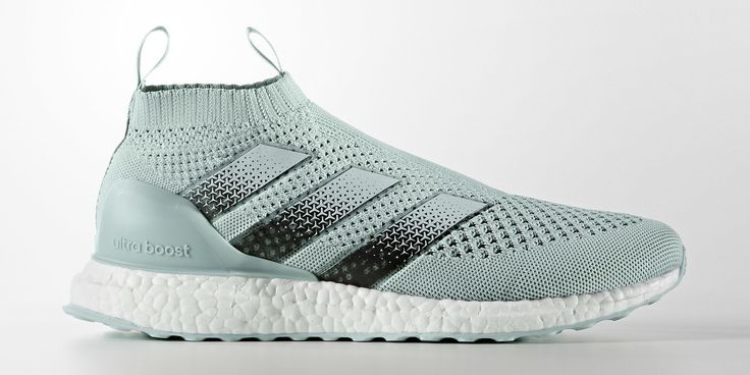
As a runner, your running shoes’ insoles are pivotal in maintaining your foot health. Over a period of time and many miles of treading, insoles wear out and cease to provide the essential support your feet need. It is therefore crucial that you recognize the signs pointing to a need for replacement. Our detailed tips for insole replacement should guide you in this process.
The first obvious signs to look for are visible wear and tear, such as flattened areas that used to be cushioned, or an inconsistency in the wear patterns of your shoe’s sole compared to new insoles. Check this by comparing your worn-out insole with a new one, focusing on the arch and heel areas.
Another indicator lies in your comfort and performance during and after running. Increased foot fatigue, discomfort, or the onset of muscle strain and pain could be your body signalling for better foot support. These symptoms often mean you are due for running shoe insole selection and replacement.
- Examine your current insoles—lookout for flattened areas, particularly on the arch and heel.
- Analyze the wear patterns—difference of the shoe’s sole wear pattern compared to new insoles is a clear signal that replacement is due.
- Pay attention to your body—increased foot fatigue, discomfort or muscle strain and pain after running typically indicates insole wear and tear.
Ensuring regular insole replacement can enhance your running performance, making each mile more enjoyable than the last.
Analyzing Running Shoe Wear Patterns
When it comes to understanding your foot’s needs for effective running, one of the often unnoticed, but vital indicators is the pattern of wear on the soles of your shoes. Your running shoe wear pattern offers valuable insight into your running mechanics and gait, serving as a personalized guide to the running shoe insole selection process. Here’s how you can decipher these signs and make a wise choice when it comes to custom insoles for running shoes.

What Your Shoe’s Sole Reveals About Your Gait
Sometimes the most common path to understanding your running mechanics is literally at your own feet. A close look at the sole of your running shoes may expose more than just the number of miles you’ve clocked. It could reveal your natural biomechanics and running efficiency. If you notice an evenly distributed wear pattern across the sole, you are likely a neutral runner – known for efficient energy use and generally well-balanced biomechanics. But these patterns can exhibit variances rooted in several factors, so let’s delve deeper.
Medial, Neutral, and Lateral Wear Patterns
Differentiating between wear patterns is key to identifying the right insole for your running shoes. Let’s take a look at three common wear types:
- Neutral Wear: This refers to an evenly distributed wear pattern over the heel and forefoot, symbolizing proper biomechanics and efficient energy use.
- Medial Wear: Medial wear, also called overpronation, is more on the inner side of the shoe, often leading to arch collapse that needs a more focused cushioning in insoles.
- Lateral Wear: Wear on the outer side of the shoe is indicative of supination, and such runners may need custom insoles for running shoes with tailored support to prevent injuries.
Understanding your own shoe wear pattern is a critical aspect of running shoe insole selection. It helps you pick the appropriate insole that caters to your unique needs, ensuring that every stride is properly cushioned and supported. Custom insoles for running shoes may be especially beneficial for addressing specific wear patterns and achieving the optimal balance of cushioning and support for injury prevention, leading to improved comfort and performance.
“read more: Running Shoes with Reflective Elements”
Choosing the Best Insoles for Running Shoes

Selecting the right Running Shoe Insole Options is an essential step towards achieving optimal running comfort and avoiding potential foot disorders. An informed decision can significantly improve your running experience by providing the necessary support, cushioning, and fit tailored to match your footsteps and running style.
This evaluation requires you to pay attention to a few significant aspects, such as the type of arch support, the design of the heel cups, the presence of forefoot pads, and the overall materials and design used to craft the insoles.
Evaluating Different Types of Arch Support
When picking out the Best Insoles for Running Shoes, the type of arch support offered by the insoles emerges as one of the significant parameters. Depending on the arch of your foot – high, medium or low, some runners might benefit from a rigid orthotic that provides maximum arch support. In contrast, others may require the slight flexibility of a semi-rigid orthotic or the enhanced comfort of a cushioned orthotic.
“read more: Best Running Shoes With Removable Insoles”
The Role of Heel Cups and Forefoot Pads
The design and functionality of the insole’s heel cups and forefoot pads also play a critical role in ascertaining the suitability of Custom Insoles for Running Shoes. Heel cups aim at stabilizing the foot by controlling the movement and positioning of the heel within the shoe. At the same time, forefoot pads focus on creating a comfortable area for the ball of the foot to rest while running and absorbing the impact generated by each footfall.
| Factors to consider | Benefits |
|---|---|
| Arch Support | Provides a structured base for the foot, helping to maintain a neutral position and distribute pressure evenly. |
| Heel Cup | Ensures stability for the foot by controlling the heel’s movement and aiding shock absorption. |
| Forefoot pad | Offers a cushioned area for the ball of the foot, mitigating impact and offering relief during long runs. |
| Materials Used | Impacts the durability, breathability, and moisture-wicking ability of the insoles, adding to running comfort. |
| Design and Length | Influence the fit within the running shoe and compatibility with the runner’s foot shape and running style. |
In conclusion, selecting the best insoles for your running shoes is a careful dedication to understanding your own foot anatomy, running style, and personal comfort preferences. Armed with this information, you can make an educated selection from the extensive range of Running Shoe Insole Options available and enjoy a more supportive, cushioned, and comfortable running experience.
“read more: Running Shoes with Shock Absorption”
Steps for Replacing Running Shoe Insoles
Replacing your running shoe insoles might seem like a daunting task, but it’s a straightforward process if you know the right steps. Keeping your running shoes in the best condition is often about the details, and that includes knowing when and how to replace running shoe insoles.
Begin by carefully removing the old insoles from your running shoes. It’s crucial to make sure the shoe cavity is empty, clean, and free from debris before installing new insoles. When selecting the replacement insole, consider not just the fit but also the level of support best suited for your foot type. The best insoles for running shoes are the ones that rest snugly inside the shoe, ensuring they don’t slip or bunch up, creating discomfort.
Once the new insoles are positioned correctly, be patient and give your feet time to adjust to change. This means gradually breaking in the insoles, maybe on shorter runs or walks, before embarking on longer runs. Remember, the goal here is not just replacing a worn-out part of your shoe; it’s about improving your running performance and foot health. So take note of these tips for insole replacement to make the most out of your running shoes.
“read also:
- Running Shoes for Track
- Running Shoes Store Near Me
- Running Shoes Amazon
- Running Shoes for Long Distance
- Running Shoes for Cross Country
in Conclusion Insoles play a crucial role in providing comfort and support in running shoes. Whether you’re dealing with heel pain, arch pain, or just looking for extra shock absorption, there’s an insole out there for you. From sport insoles like the Currex RunPro to orthotic shoe inserts, these products can help prevent pain and enhance your running experience. Remember, it’s important to replace your insoles regularly to ensure they’re providing the support you need. With the right insoles, you can take your running to the next level.
Lastly, consult with a podiatrist if you’re unsure about the best type of insoles for your needs. They can provide professional advice tailored to your specific foot and lower leg structure. With the right insoles, you can revitalize your running shoes and take your performance to the next level.


